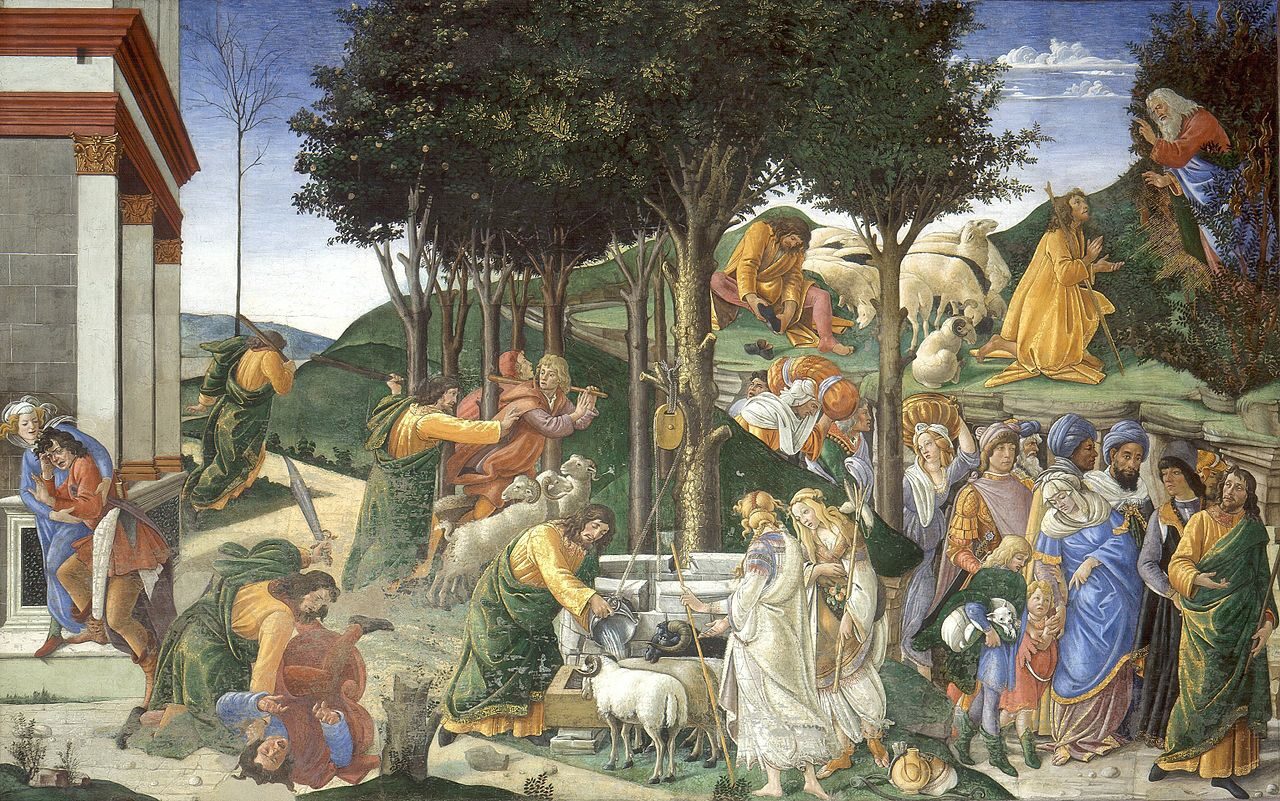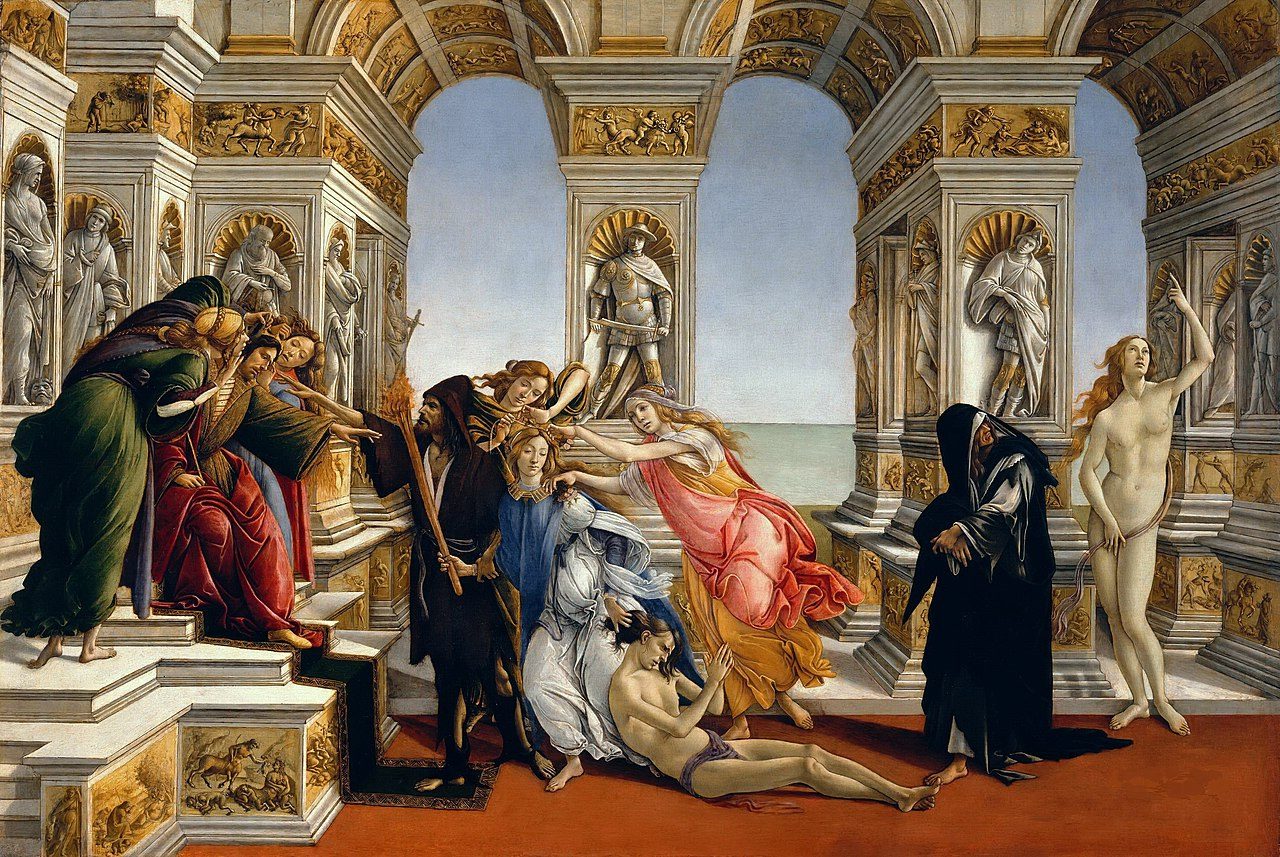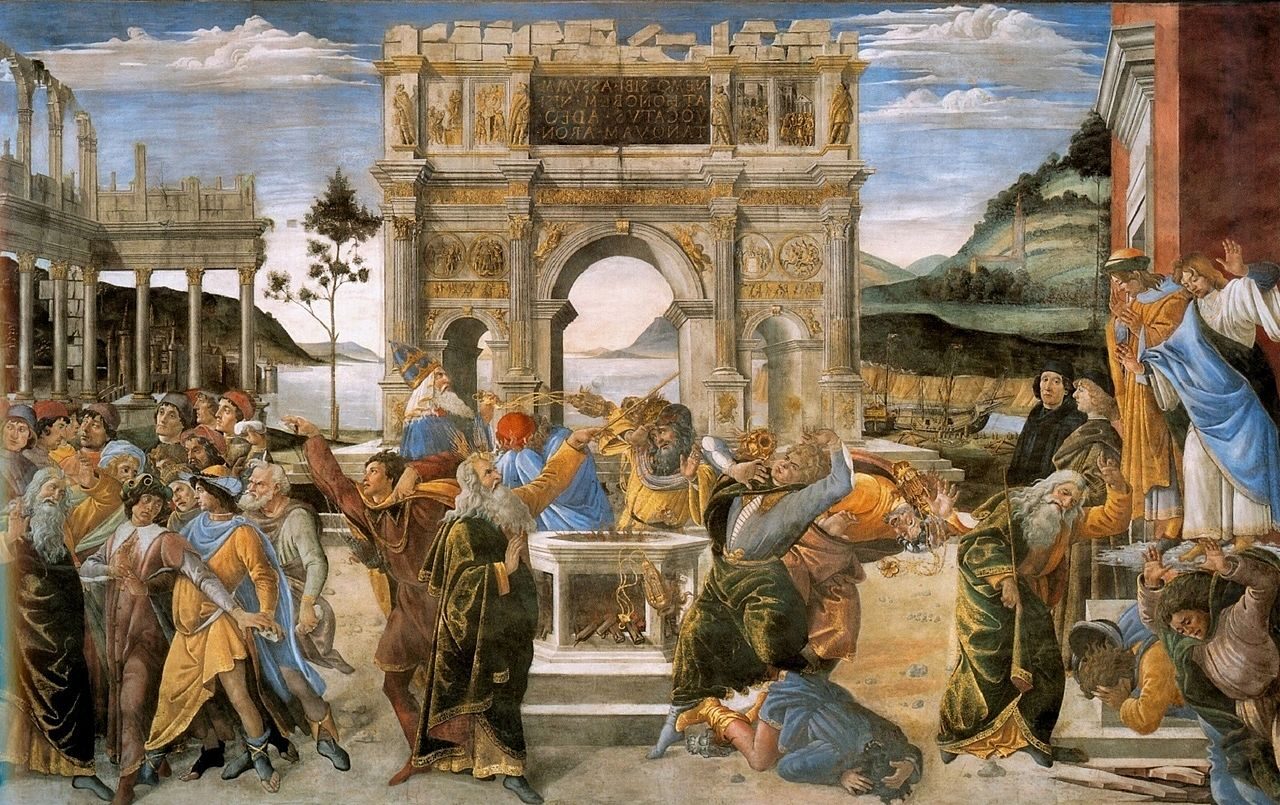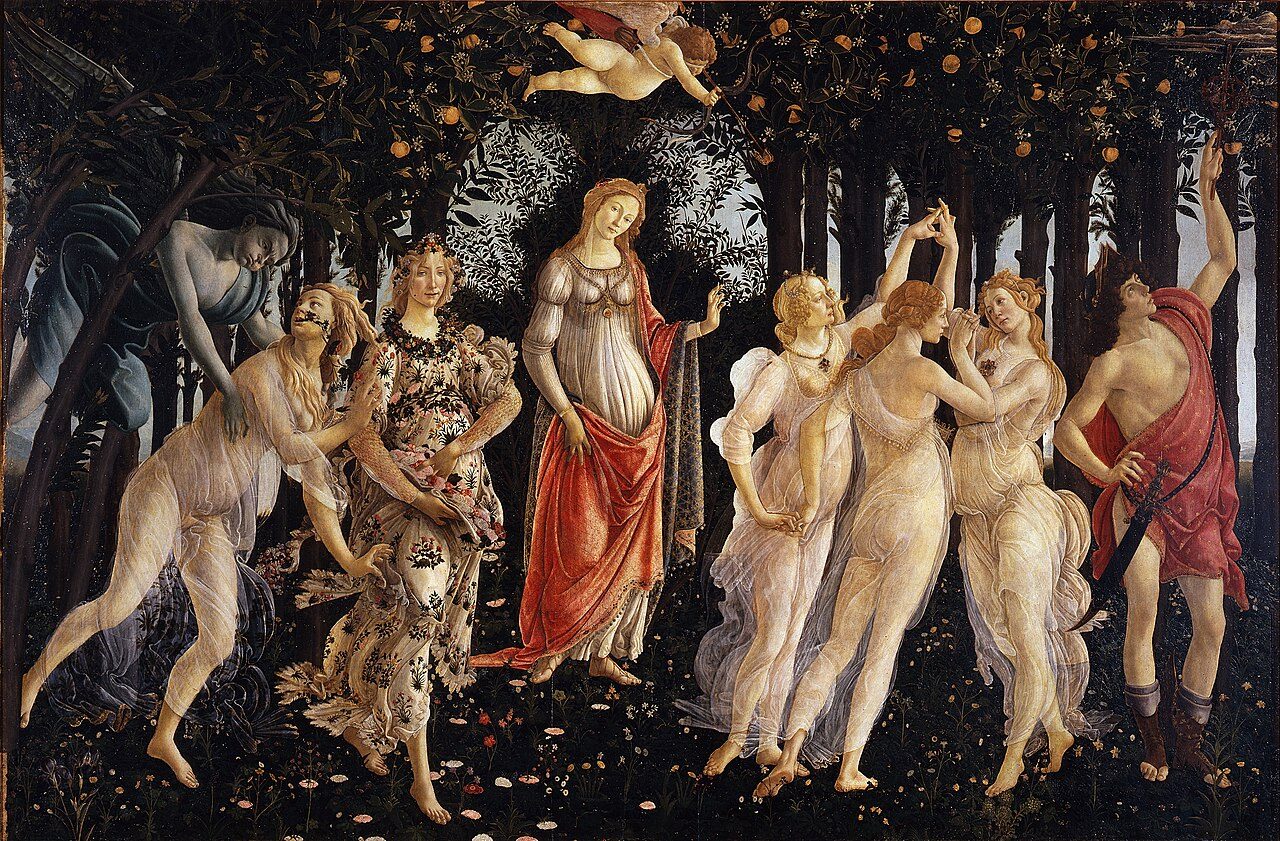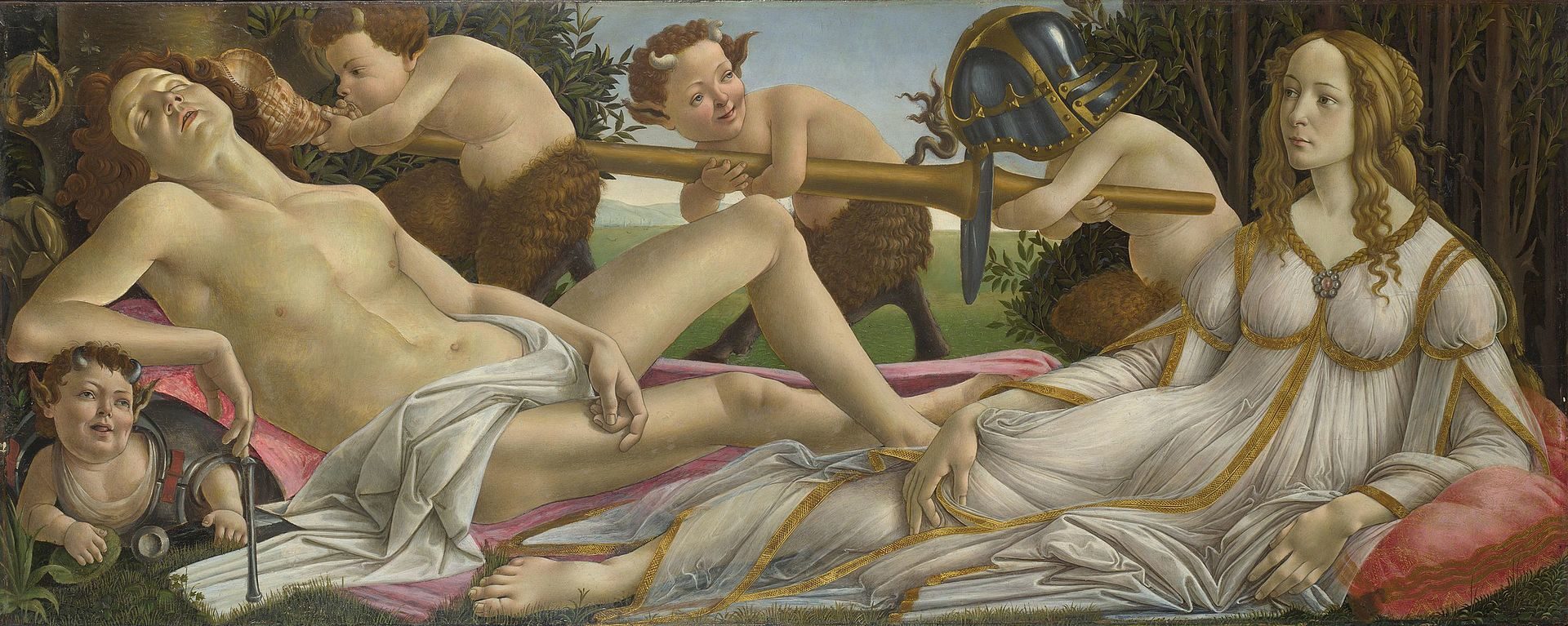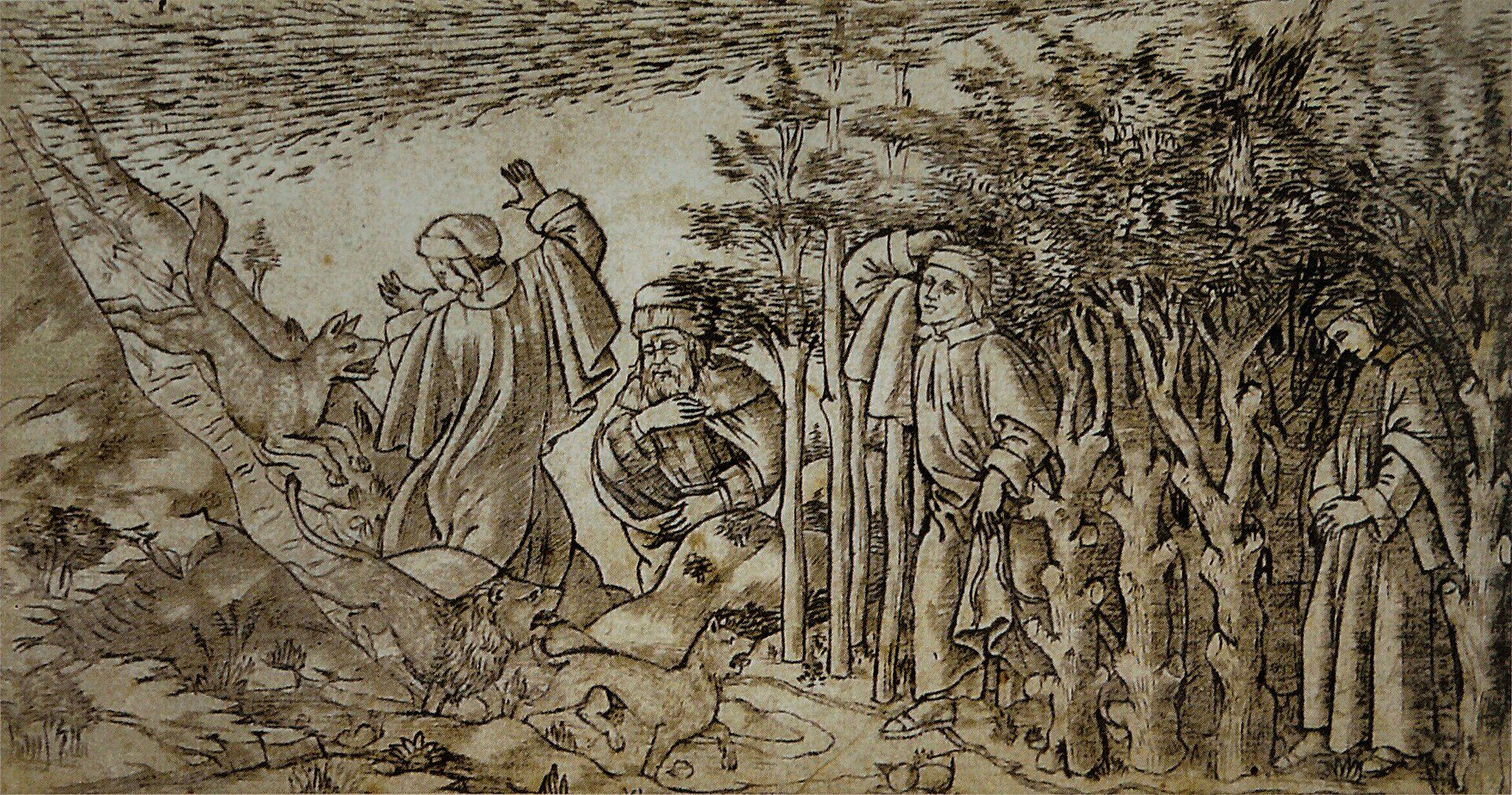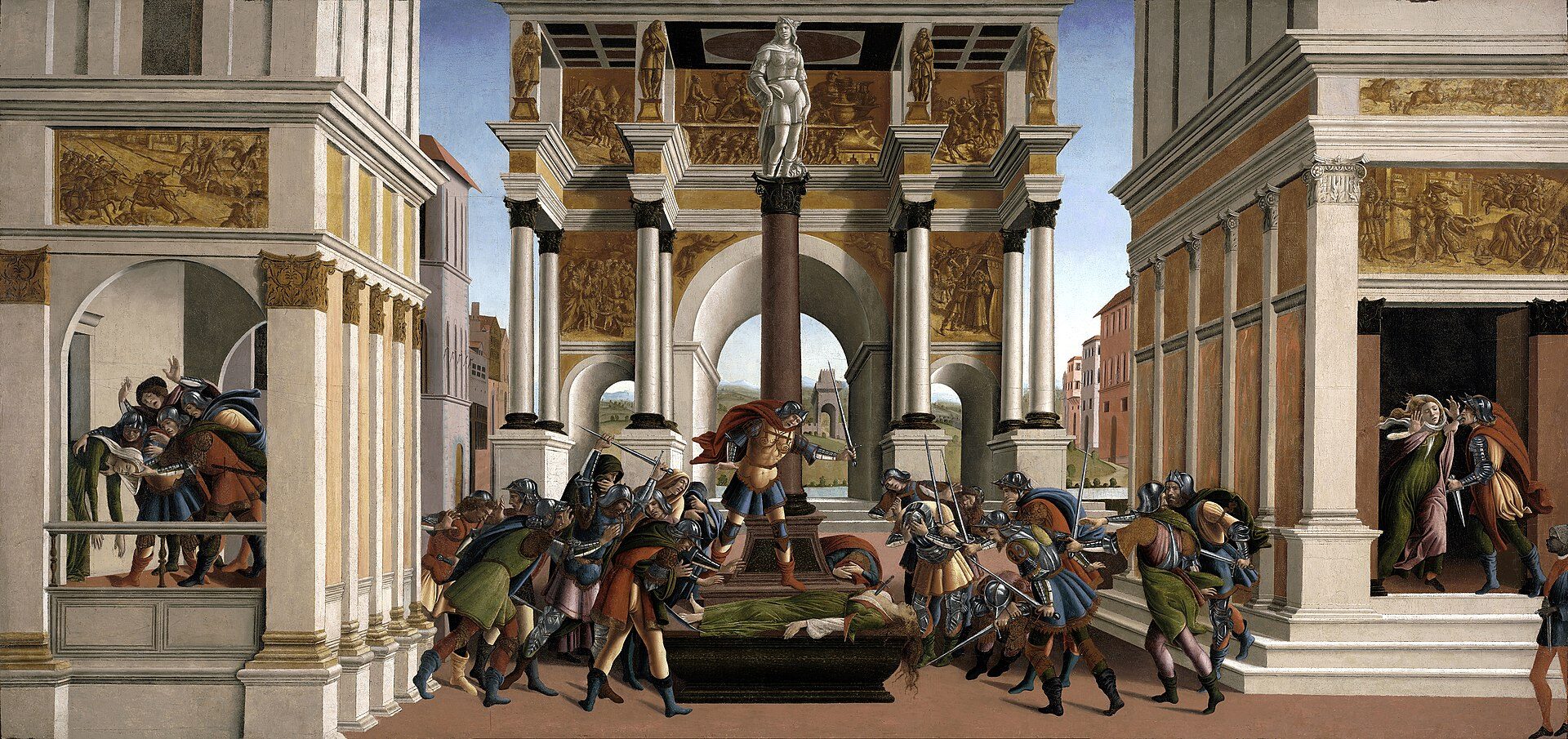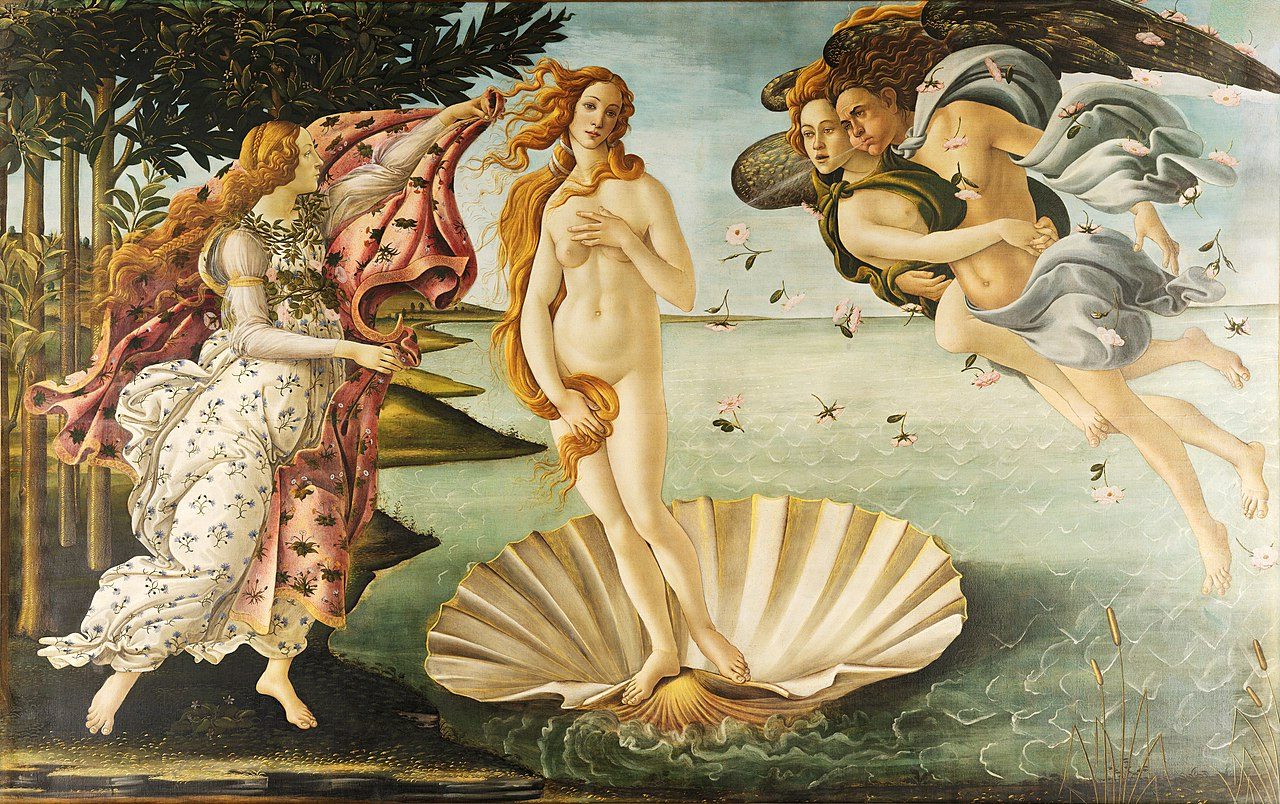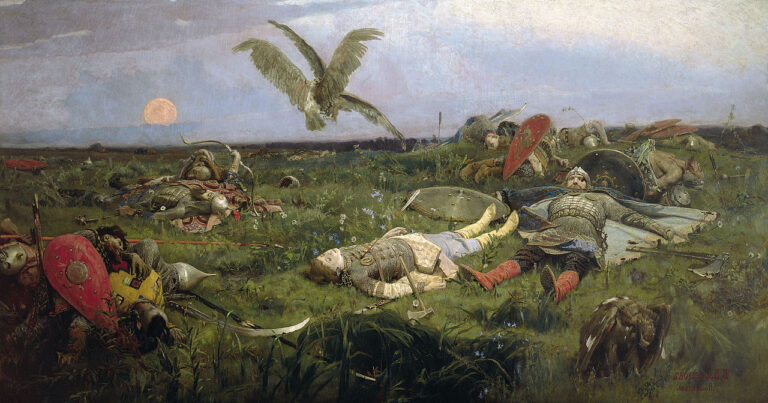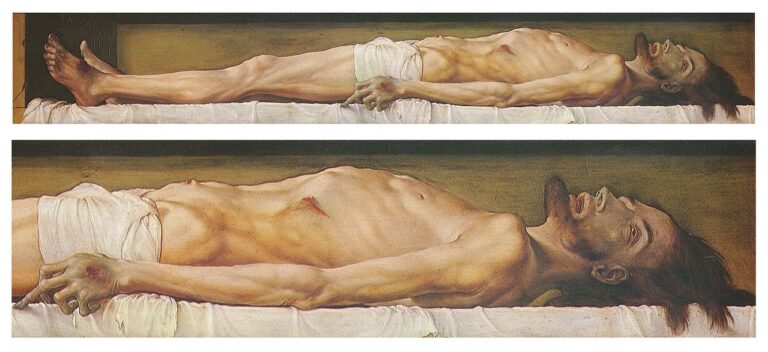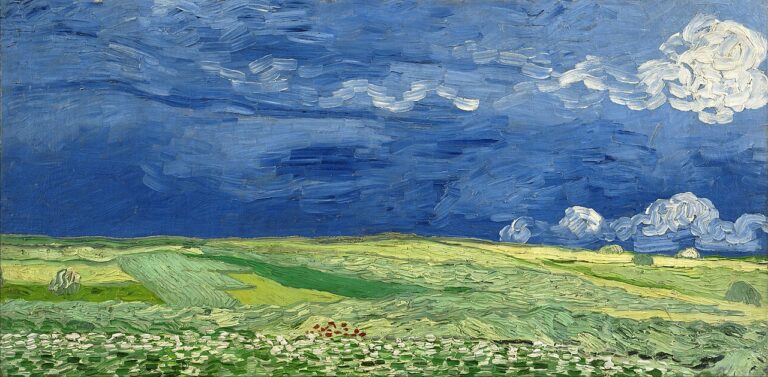Sandro Botticelli Paintings: Masterpieces of the Renaissance Era
Born: 1 March 1445, Florence, Italy
Death: 17 May 1510, Florence, Italy
Art Movement: Early Renaissance
Nationality: Italian
Influenced by: Masaccio
Teacher: Filippo Lippi
Sandro Botticelli Paintings: Masterpieces of the Renaissance Era
Life and Influence of Sandro Botticelli
Sandro Botticelli was a leading figure of the Early Renaissance in Florence. His artistic contributions and connections with influential families like the Medici left a lasting impact on art and culture, extending beyond his own time.
Early Life and Training
Botticelli was born in Florence in 1445 and grew up in a city known for its vibrant culture and flourishing arts. As a young student, he trained under Fra Filippo Lippi, a respected painter of the time. Lippi’s teachings greatly shaped Botticelli’s style, evident in his attention to fine details and graceful lines.
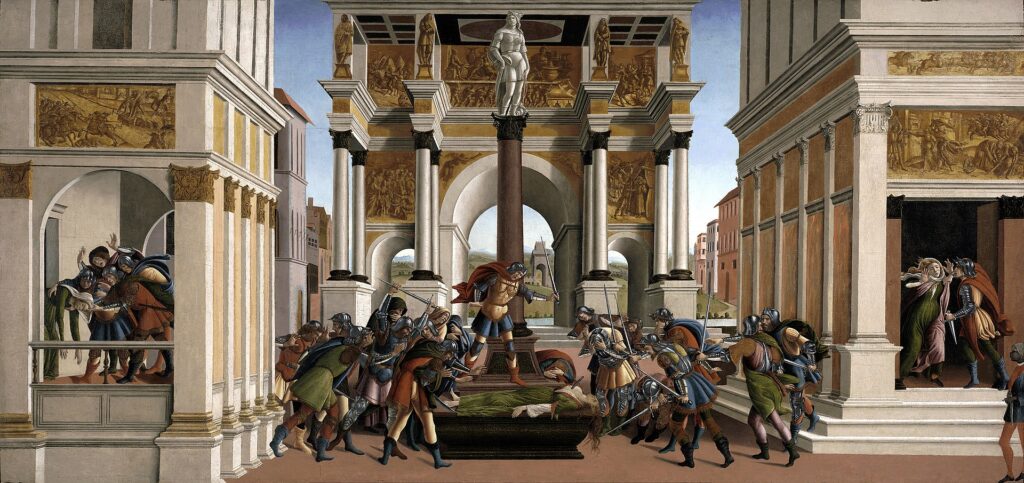
The Story of Lucretia (c. 1500) by Sandro Botticelli
Lippi introduced Botticelli to religious themes, which were popular in Florentine painting. He honed his skills in rendering delicate figures and emotional expressions. Botticelli’s education was further enriched by his exposure to the works of Andrea del Verrocchio, another pivotal artist in Florence.
Patronage of the Medici Family
The Medici family, especially Lorenzo de Medici, played a significant role in Botticelli’s career. Their patronage provided Botticelli with numerous commissions, allowing him to create some of his most prominent works. Through these connections, he gained access to influential circles in Florence.
Botticelli painted for various members of the Medici family, contributing to the decoration of the Villa di Castello and other significant projects. His artworks often included mythological themes, favored by the Medici, showcasing his ability to combine classical ideas with Florentine elegance.
Impact on the Renaissance and Beyond
Botticelli’s work marked a turning point in Renaissance art. His paintings, like “The Birth of Venus” and “Primavera,” epitomize the blend of natural beauty and human emotion that defined the period. These masterpieces captured the spirit of the Italian Renaissance, emphasizing harmony and idealized forms.

The Birth of Venus (c. 1485) by Sandro Botticelli
Botticelli’s fame waned after his death in 1510, but his influence endured. Artists like Filippino Lippi and later figures in art history continued to draw inspiration from his work. Giorgio Vasari, a notable art historian, credited Botticelli with shaping the Florentine School and enriching Renaissance culture.
Major Works and Artistic Style
Sandro Botticelli is celebrated for his diverse body of work, including mythological scenes, religious compositions, and expressive portraits. His paintings are characterized by their unique style and notable use of color and composition.
Iconic Mythological Paintings
Botticelli is best known for his mythological scenes, particularly The Birth of Venus and Primavera. These paintings, housed in the Uffizi Gallery, show Venus, the goddess of love, and celebrate themes from classical mythology.
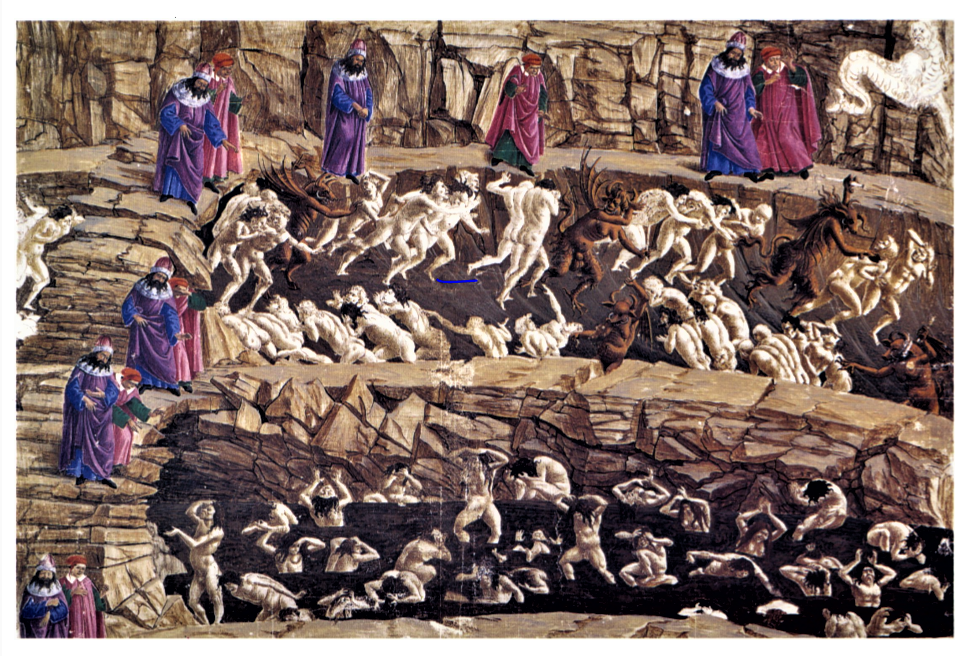
Divine Comedy Illustrated by Botticelli (c. 1480–1495) by Sandro Botticelli
In Primavera, Botticelli features figures from mythology set in a lush spring landscape, representing themes of love and renewal.
In The Birth of Venus, Botticelli uses a soft color palette and flowing lines to depict Venus emerging from the sea. These works are celebrated for their beauty and innovative portrayal of mythological subjects.
Devotional and Religious Compositions
Botticelli also created impactful religious works like Adoration of the Magi and Madonna and Child. Adoration of the Magi includes the Medici family, integrating portraiture with religious narrative, while Madonna and Child reflects deep religious devotion.
Sistine Chapel frescoes and The Annunciation showcase Botticelli’s ability to convey emotion and narrative through religious themes. His use of tempera on panel was a common technique of the time, allowing for intricate details and vibrant color palettes.
Portraits and Secular Works
In addition to religious and mythological themes, Botticelli painted expressive portraits, including Portrait of a Man with a Medal of Cosimo the Elder. This painting reflects the importance of Medici patronage in Florence.
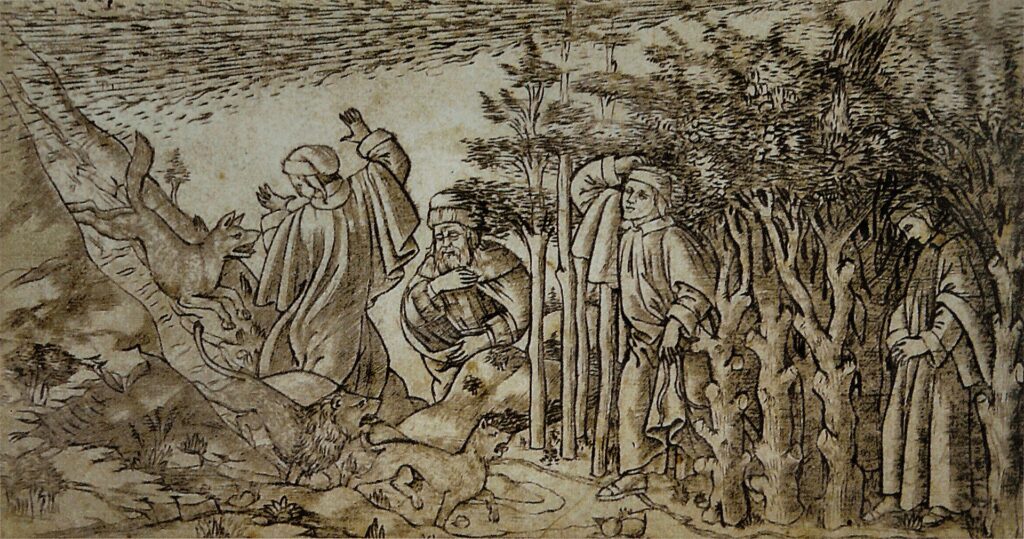
Engraving after Botticelli (c. 1480s) by Baccio Baldini
Another significant work, Pallas and the Centaur, explores allegorical themes. In Venus and Mars, Botticelli portrays the Roman gods in a scene suggesting themes related to love, war, and harmony. His portraits often reveal the personality and status of his subjects.
Technical Style and Innovations
Botticelli’s art is defined by his use of tempera, detailed line work, and vivid color. He masterfully employed perspective, though often subtly, to create depth and spatial harmony.
His compositions were influenced by late Gothic styles and Neoplatonism, which focused on the merging of beauty and spiritual ideals.
He excelled in creating dynamic figures with flowing drapery and expressive gestures. Botticelli’s technical skills, combined with his unique artistic vision, allowed him to create works that captivate viewers both with their beauty and their complex storytelling.
Notable Paintings: An In-Depth Look
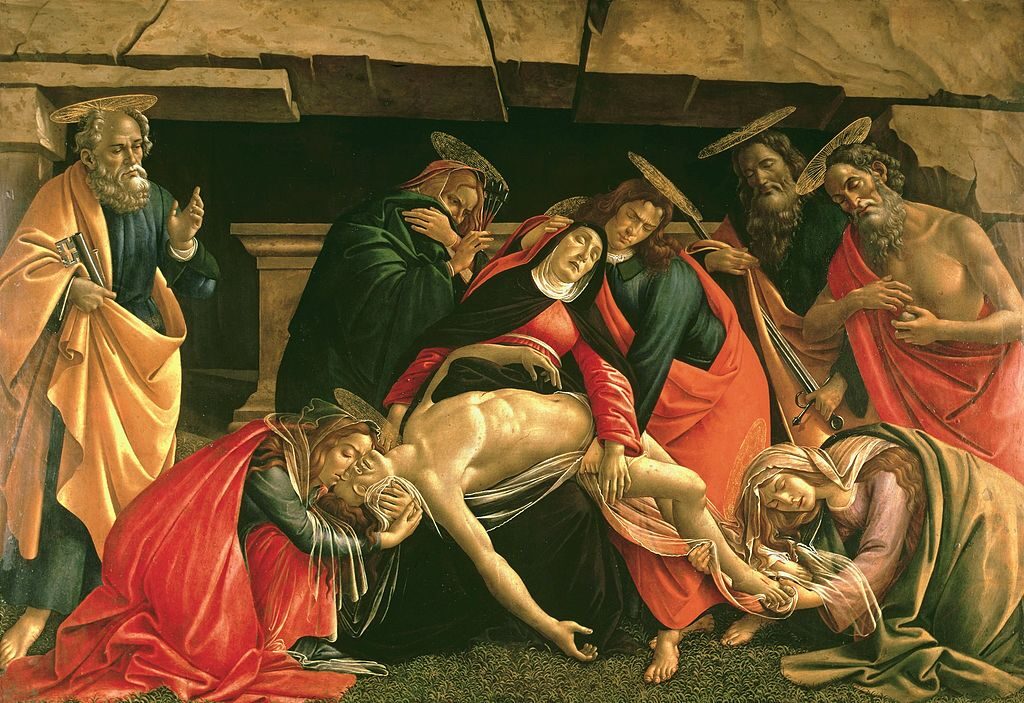
Lamentation of Christ (early 1490s) by Sandro Botticelli
Sandro Botticelli, an iconic Italian painter of the Renaissance, is best known for his mythological and religious artworks. His pieces often showcase graceful figures and employ linear perspective.
The Birth of Venus Analysis
The Birth of Venus stands as one of Botticelli’s most celebrated works. Painted in the late 15th century, it depicts the goddess Venus emerging from the sea. This painting is renowned for its elegant figures and sense of movement.
Botticelli used tempera on canvas, a common medium in Renaissance art, to create vivid colors. The positioning of Venus and gentle waves suggest a sense of harmony. Important themes include beauty and divine love, captured through delicate expressions and the interaction of the figures, creating a timeless piece admired across centuries.
Primavera: An Allegorical Masterpiece
In Primavera, Botticelli illustrates a blend of mythological and allegorical themes. It is set in a lush garden full of symbolic figures, including Venus, Mercury, and the Three Graces.
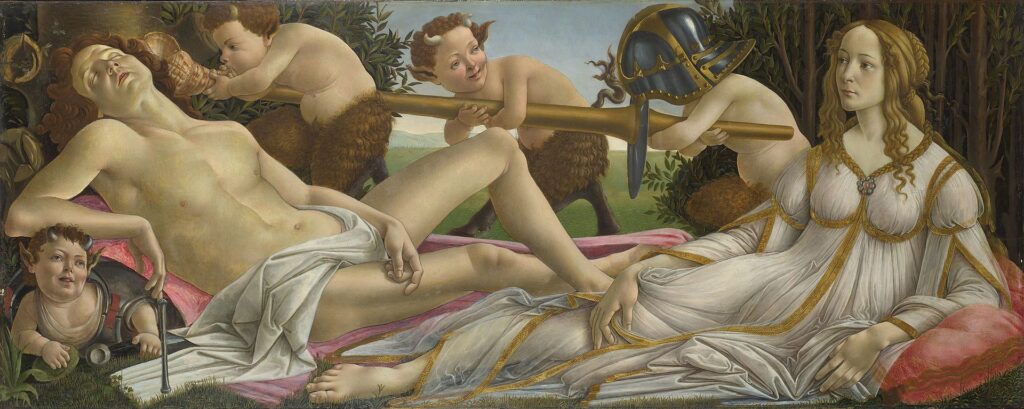
Venus and Mars (c. 1485) by Sandro
This painting, done in tempera on panel, reflects the renewed interest in classical mythology during the Renaissance. The use of perspective and detailed imagery brings depth and life to the scene. Each character represents an abstract concept, such as love or fertility.
Botticelli’s ability to narrate through symbolism and intricate patterns highlights his unique contribution to Italian art, offering viewers a glimpse into the philosophical ideals of the era.
Religious Significance in The Annunciation
The Annunciation is a testament to Botticelli’s skill in religious storytelling. The scene captures the moment when the angel Gabriel informs Mary of her role as the mother of Jesus.
Botticelli uses careful attention to linear grace and proportion to convey the spiritual significance of this event. The figures are placed to draw the viewer’s eye across the canvas, while their gestures add an emotional dimension to the scene.
Through the serene expressions and sacred setting, this painting reflects Botticelli’s mastery in creating works with deep religious meaning, emphasizing the Renaissance blend of artistry and devotion.
Cultural and Historical Context

Primavera (c. 1482) by Sandro Botticelli
Sandro Botticelli’s artwork reflects the dynamic interplay between Florence’s rich cultural heritage and the shifting political landscape of the time. His paintings skillfully blend religious themes, mythological topics, and the influence of contemporary artists and thinkers.
Influence of Florentine Culture and Politics
Florence, during Botticelli’s lifetime, was a hub of artistic and cultural innovation. The Medici family, notable patrons of the arts, played a significant role in cultivating this environment.
Botticelli thrived under their patronage, producing some of his most iconic works. The political instability of the time, such as the ousting of the Medici and the rise of reformist preacher Savonarola, added layers to his art, reflecting societal tensions.
The city’s artistic scene was not just about visual beauty; it often conveyed messages about power and influence. Botticelli, like his contemporaries Da Vinci and Michelangelo, contributed to the distinctive Florentine painting style, merging elegant forms with powerful storytelling.
This dynamic interplay made his work resonate deeply with those who sought to understand Florence’s evolving narrative.
The Role of Religion and Mythology in Botticelli’s Work
Botticelli’s paintings are a testament to the profound role of religion and mythology in Renaissance art. His “The Birth of Venus” and “La Primavera” stand as prime examples, showcasing mythological figures brought to life through his unique style.

Punishment of the Sons of Corah (1481–1482) by Sandro Botticelli
These works highlight Botticelli’s affinity for classical mythology, aligning with Florence’s admiration for ancient philosophies.
Religious themes are equally prominent, shaped by the context of the Florentine Renaissance. His deep Catholic faith woven into his pieces reflects the era’s spiritual introspection.
Botticelli’s compositions often draw from sacred texts and events, blending the divine with the human, creating a bridge between tangible reality and spiritual aspirations—a hallmark of his artistic legacy.
Associations with Contemporary Artists and Thinkers
Botticelli’s contemporaries were not just fellow artists but also influential thinkers. His connections with great minds like Raphael and Da Vinci enriched his artistic journey.
Their ideas and innovations influenced Botticelli’s approach, fostering a culture of collaboration and shared intellectual pursuit.
Particularly noteworthy is Botticelli’s presumed portrait of Simonetta Vespucci, a celebrated muse of the time, believed to inspire both his work and that of other Renaissance artists.
Engaging with such figures allowed Botticelli to incorporate diverse perspectives into his own creations, ultimately enhancing his contribution to the canon of Renaissance artistry and leaving a lasting impact on future generations of artists.
Preservation and Legacy
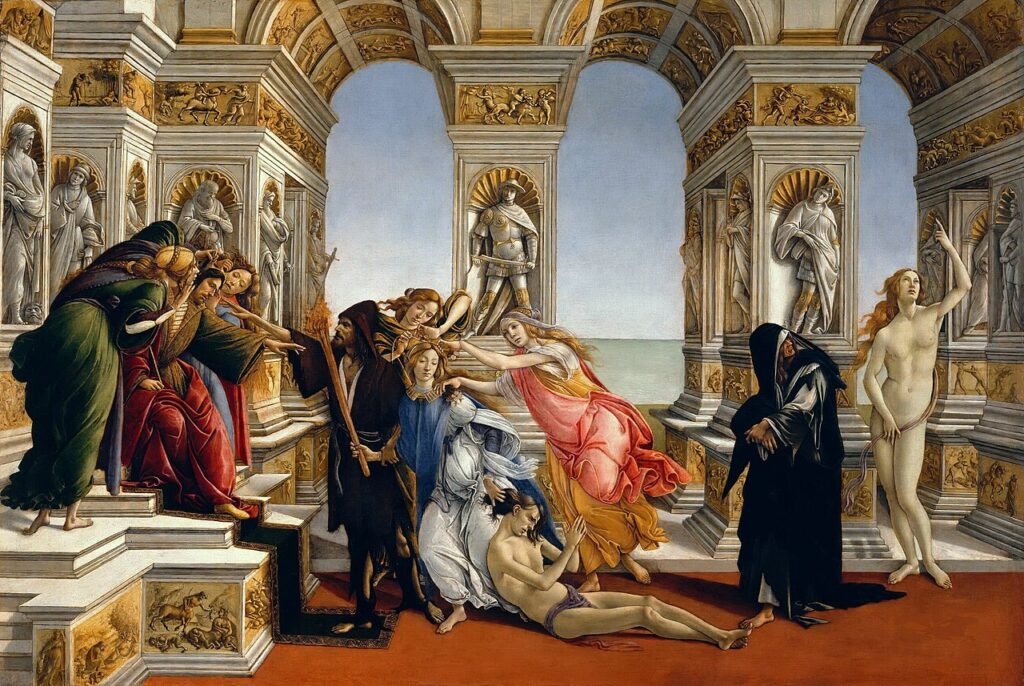
Calumny of Apelles (c. 1494–95) by Sandro Botticelli
Sandro Botticelli’s paintings are preserved in renowned museums worldwide, showcasing his artistic brilliance. His work has had a profound influence on later art movements, leaving an indelible impact on the art world.
Collections and Museums
Botticelli’s masterpieces are carefully preserved in esteemed institutions such as the Uffizi Gallery in Florence. This gallery houses famous works like the “Madonna of the Pomegranate,” reflecting his unique style and themes.
The Victoria and Albert Museum also showcases some of his remarkable pieces, attracting art lovers globally.
The Gemäldegalerie in Berlin holds several of Botticelli’s paintings, emphasizing his influence in European art collections.
These museums play a crucial role in preserving Botticelli’s legacy, allowing future generations to appreciate his contributions to art.
Influence on Later Art Movements
Botticelli’s work significantly impacted later art movements, notably the Pre-Raphaelites. His elegant lines and attention to detail inspired many 19th-century artists who admired his rejection of the rigidity found in classical art styles.

The Youth of Moses (c. 1481–1482) by Sandro Botticelli
His ability to portray emotion and beauty continues to influence contemporary artists.
His influence isn’t limited to the visual arts. Botticelli’s legacy extends into popular culture, where his iconic paintings inspire themes and motifs in literature and film.
This enduring impact underscores his role in shaping both historical and modern art landscapes.
Frequently Asked Questions
Sandro Botticelli was a key figure in the Renaissance era known for his mythological themes and innovative painting techniques. Some artworks are especially celebrated for their symbolism and influence on future art movements.
What subjects did Sandro Botticelli commonly depict in his artwork?
Botticelli often focused on mythological and religious themes. His paintings such as “Primavera” and “The Birth of Venus” showcased scenes from classical mythology. Religious subjects also appear frequently, highlighting his ability to blend sacred with classical elements.
What motifs are evident in the work ‘Primavera’ by Botticelli?
In “Primavera,” Botticelli used motifs that reflect themes of love, beauty, and natural growth. The painting is rich in symbolism, including various mythological figures like Venus and Mercury, each representing different elements of love and nature.
What influence did Sandro Botticelli have on the art world and subsequent generations?
Botticelli’s innovative techniques and themes left a lasting impact on Western art. His exploration of mythological themes and detailed style influenced artists both during and after the Renaissance. His works continue to be studied for their artistic and cultural significance.
Which artwork is considered to be Sandro Botticelli’s most significant contribution to the Renaissance era?
“The Birth of Venus” is often hailed as one of Botticelli’s most significant contributions. It exemplifies Renaissance ideals with its graceful depiction of the goddess Venus emerging from the sea, embodying themes of beauty and humanism.
How extensive is Sandro Botticelli’s artistic oeuvre and what are its notable characteristics?
Botticelli’s artistic oeuvre includes numerous religious and mythological paintings. His style is characterized by delicate figures, intricate details, and flowing lines. He was prolific, leaving behind a collection that has been pivotal in defining Renaissance art.
What locations are most associated with the display and preservation of Botticelli’s paintings?
Many of Botticelli’s renowned works are housed in the Uffizi Gallery in Florence, Italy. Other notable locations include museums and galleries throughout Europe and the United States. His influence in art history is preserved and showcased in these places.

